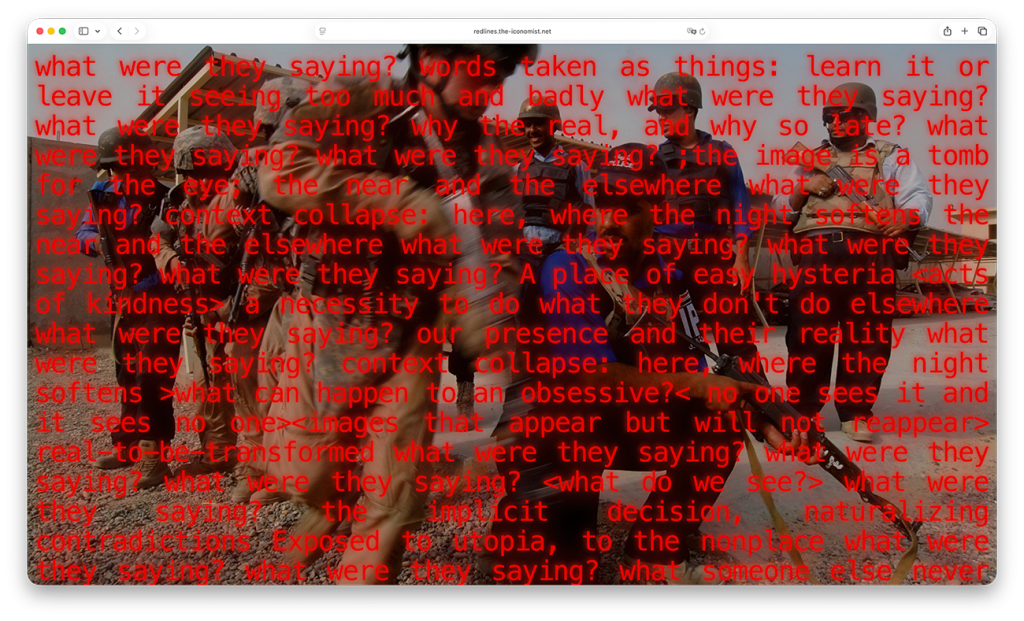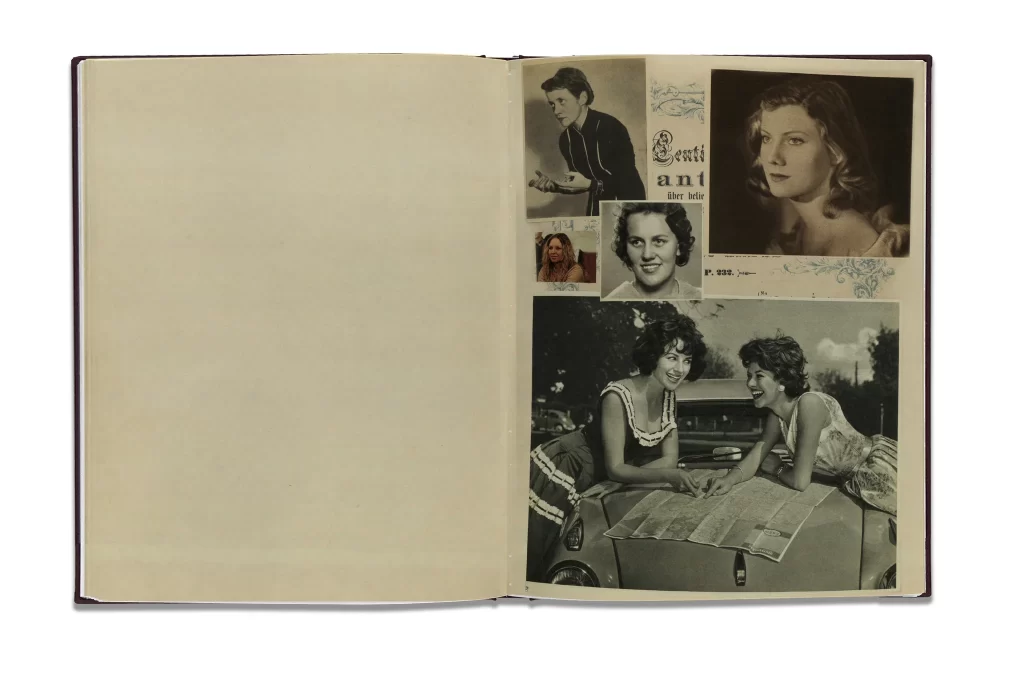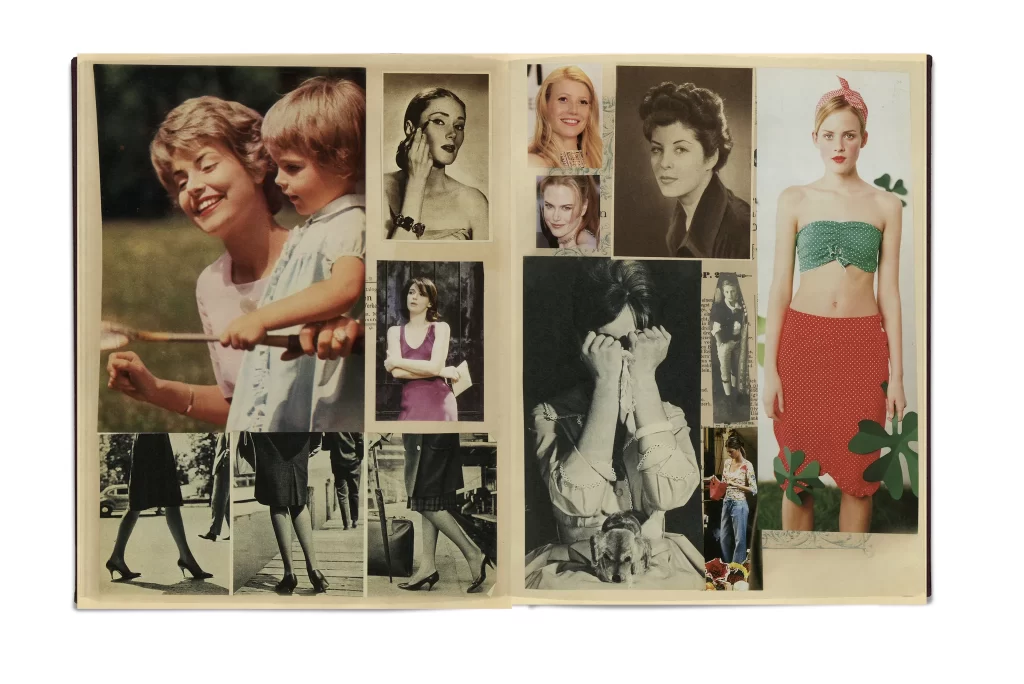/latest

Nº 8 — AFTER-IMAGE. The eighth issue of THE-ICONOMIST, titled To propose / To recreate, takes as its point of departure Édouard Glissant’s notion of the aprèzan: the present as a living interval between destruction and regeneration. From this idea unfolds a reflection on what it means to create in an era where images multiply endlessly, and where visibility itself has become a form of capture. In a world increasingly shaped by artificial intelligence, every image we share becomes data; analyzed, categorized, and reabsorbed into vast systems of recognition. Within this landscape, the publication suggests a different kind of response: a digital craftsmanship that moves against automation, exploring how the deliberate act of cutting, layering, and reassembling images can function as both creation and camouflage, a way of disrupting the smooth readability demanded by machines. To propose / To recreate unfolds as a moving terrain of visual thought, which is part proposal, part reconstruction. In addition to experimental texts created by THE-ICONOMIST, the edition also features selected excerpts from authors such as Naomi Klein, Thomas Pynchon, Mark Fisher, Olga Tokarczuk, Fernando Birri, among others.
VOL. II — IMAGE BANK (2024-present) The second volume of THE-ICONOMIST, launched in 2024, draws from Scott Watson’s idea that “we are all image banks” to explore the appropriation of digital images as a way of commenting on the world. Its editions are built from collections sourced from image banks, expanding the project’s research on contemporary visual flows and the possibilities of intervention within this vast collective repository.
/input

ACCIDENT & EMERGENCY_This zine presents a visual essay on the aesthetics of ruin and the relentless force of collapse, bringing together appropriated images of crashes, fires, and rollovers—where twisted metal and flames dance in the wake of destruction. Amid charred wreckage and distorted forms, a landscape of chaos and beauty emerges, a vestige of the moment when everything fell apart.
13x20cm, 48 pages, saddle stitched binding. Shipping worldwide.
Buy in print $15
Buy digital version $1.99
/extensions

STAYNONSTOP is a photobook consisting of a selection of 130 images generated by artificial intelligence. The images are accompanied by fragments of artists’ texts from different sources. The name of the book comes from a reflection on how addictive these image production processes through artificial intelligence can be, like everything these days. By placing these images in confrontation with the text fragments, we try to force new readings and the creation of new contexts different from the ones used to generate the images.
/database
/activity
News from Switzerland: THE.ICONOMIST #issue7 and the zine F is for FRAGILITY were shortlisted for the Rosmarie Tissi Award in graphic design in the MA-g (Museum of Avant-garde) Awards. These publications will now become part of the institution’s contemporary collection.
“We always think of the imagination as the faculty that forms images. On the contrary, it deforms what we perceive; it is, above all, the faculty that frees us from immediate images and changes them. … Imagination is essentially open and elusive. We could say that a stable and completely realized image clips the wings of the imagination. It causes us to fall from the state of dreaming imagination that is not confined to image, and that we may call imageless imagination, just as we speak of imageless thought.”
— Gaston BACHELARD, in Air and Dreams (1943)
28 July 2025, 11:20 AM [PROSE] A DRESS GREW ITSELF
894 WORDS, READING TIME: 4m58s [read]
[INPUT] I TOOK A PHOTO AND I FORGOT TO FEEL.pdf
2025, research for upcoming project, 35p., 1080×1920 each [view]
/to-watch
/play

rEDLines is a virtual automated writing installation that subverts the logic of the journalistic headlines to reveal their flaws, excesses, and poetic deviations. Hosted on THE-ICONOMIST, the work operates as a language machine, firing off fragments of text that recombine incessantly, creating impossible headlines, news from a fictional or distorted world, echoes of a collapsing reality. Playing with the double meaning of the term, redlines also refers to corrections, censorship, or limits drawn in red, the installation proposes a space of tension between language, truth, and fiction. Each phrase that appears on the screen carries the weight of a possible headline, but also the lightness of error, chance, and productive failure.
/research


“80 per cent of artists are dealing with mother issues.” In this personal interview the internationally praised German artist Hans-Peter Feldmann muses on the magnetic power of women, and shares how he has used art as both escape and therapy. “Make a job out of it and all is lost.” Feldmann does not consider being an artist to be his job, because considering it as such would smother his enthusiasm. Art, he feels, has been discredited by the sky-high sales through auction houses, which is a transaction between investors and collectors – not artists. But art simply should not be put on a pedestal: “Art is an ordinary part of life like sports, food and sleep.” Images of women attract Feldmann, who claims that the majority of artists are dealing with mother issues: “It’s always about women, about mothers, images of women.” As an example, he points out how public toilets for men are similar to ancient caves with their many drawings of vulvas. The repetitive function of collecting pictures is therapeutic to Feldmann, and makes things clear and tangible for him. Many artists use their art as a form of therapy, “as a flight to another world someone from the old world can’t access.” As for Feldmann, who too had mother-issues and grew up during the war and the post-war years, this was also the case: “… the images opened a world to me that was very, very lovely.”
“Taking its name from economist Gilson Schwartz’s 2006 neologism ‘Iconomy’ while also nodding to longstanding news weekly The Economist, THE-ICONOMIST questions our relationship with images in this era of image saturation with each issue using verbs as its themes.”
— MAGCULTURE.com
“THE-ICONOMIST’s latest issue is hectic and “suffocating” in its use of online image banks. The magazine has never really operated within the requirements of a conventional magazine. This isn’t just because the issues don’t have any advertisements or an ISBN number, or even that it doesn’t have a website that can be indexed by Google. The magazine defies a traditional editorial approach at every turn.After its first four issues’ focus on AI-generated visuals, the magazine has returned with its fifth edition — a printed exploration of surveillance in the digital age.”
— ELLIS TREE, It’s Nice That